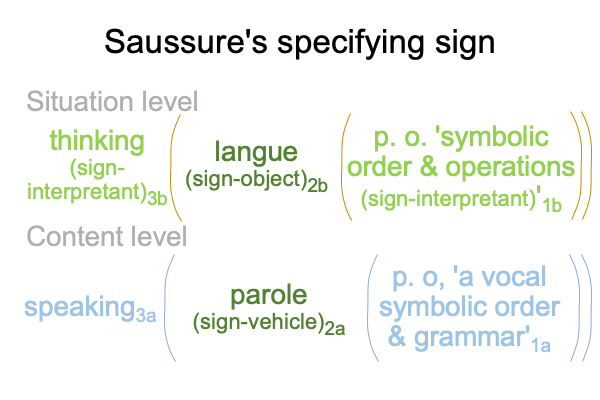0032 The hylomorphe does not really “unfold” into a category-based nested form.
A better word might be “expands”.
The hylomorphe expands into a category-based nested form.
The category-based nested form encourages an impulse to “fill in the blanks”. On one hand, an actuality2 demands a corresponding normal context3 and potential1. On the other hand, a normal context3 and its potential1 draw in an appropriate actuality2.
0033 For example, here is a picture of the Positivist Judgment as a category-based nested form.
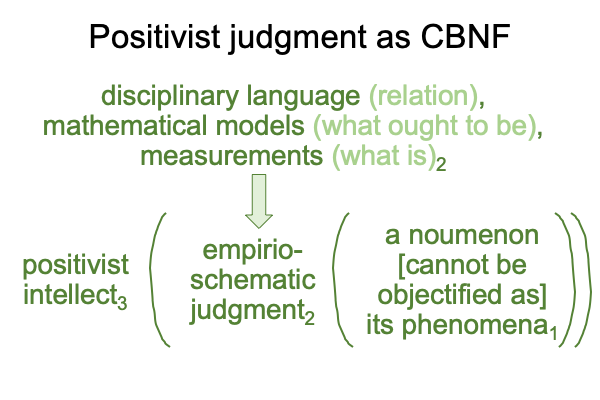
How does this apply to the character of scientific discovery?
On one hand, a scientist investigates an actuality2, calling for a corresponding normal context3 and potential1.
On the other hand, the normal context of the positivist intellect3 is extremely aware of the potential of phenomena1 to attract the curiosity of a scientist2.
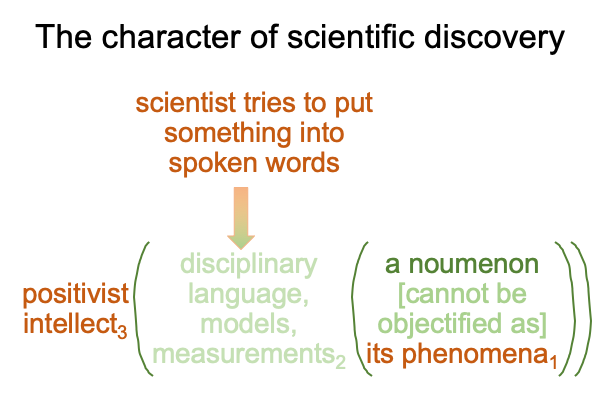
0034 Are there other ways to expand Saussure’s semiology, whose core claim is presented here as a hylomorphic structure?
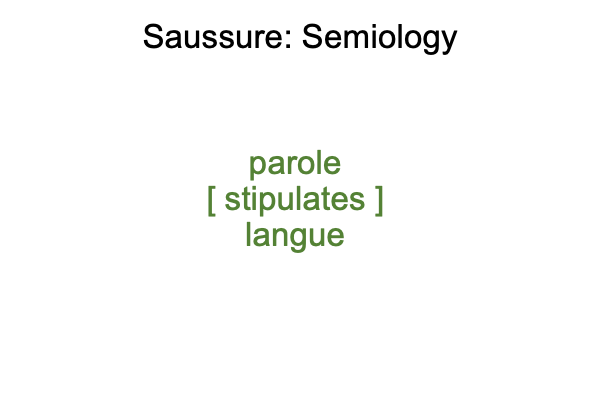
0035 Another way for Saussure’s dyad of parole [stipulates] langue to worm its way into Peirce’s category of thirdnesscomes by way of A Primer on Sensible and Social Construction, by Razie Mah, available at smashwords and other e-book venues.
Parole2a is a contenta-level actuality2.
Langue2b is a situationb-level actuality2.
Here is the resulting two-level interscope.
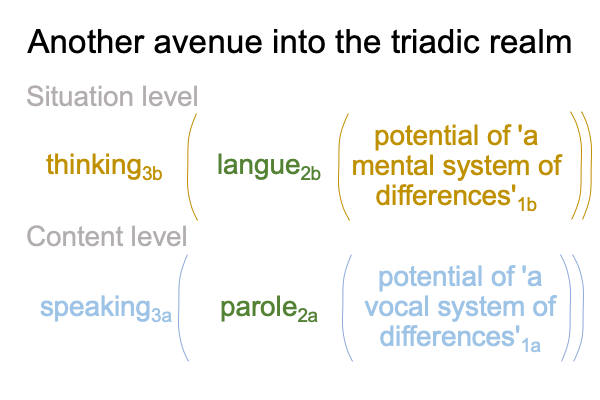
0036 On the content level, the normal context of speaking3a brings the actuality of parole2a into relation with the potential of ‘a vocal system of differences’1a.
On the situation level, the normal context of thinking3b brings the actuality of langue2b into relation with the potential of ‘a mental system of differences’1b.
Going down the column for actuality2, langue2b virtually situates (and emerges from) parole2a.
0037 This expansion is more than a passage from secondness into thirdness. Unlike the direct expansion into a category-based nested form, discussed earlier, the two-level expansion enters the terrain of sign.
0038 Basically, a sign is a triadic relation, where a sign-vehicle stands for a sign-object according to a sign-interpretant. Three elements are required: a sign-vehicle, a sign-object and a sign-interpretant. Peirce uses his categories to create typologies of signs, based on the categorical-character of sign-vehicles, sign-objects and sign-interpretants. Diagrams of category-based nested forms allow an alternate way to depict sign-relations.
Saussure’s two-level interscope contains (what I call) a “stipulating” sign. Scholastics use the label “specifying”. So the following figure exhibits extrinsic specificative formal causality.
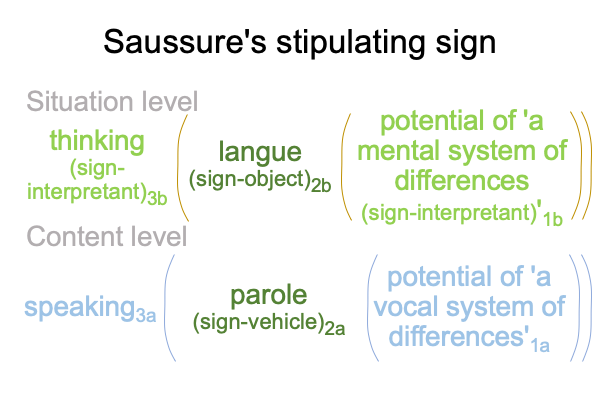
0039 Of course, these associations are speculative. They are consistent with Comments on John Deely’s Book (1994) New Beginnings, where the specificative and exemplar signs are diagrammed using category-based nested forms.
One attraction of this transition from Saussure’s dyad into Saussure’s specifying sign is that a finite system of differencesmay be called (in Peirce’s terminology) “a symbolic order”. Consequently, grammar (for parole) corresponds to symbolic operations among elements within a symbolic order (for langue).
